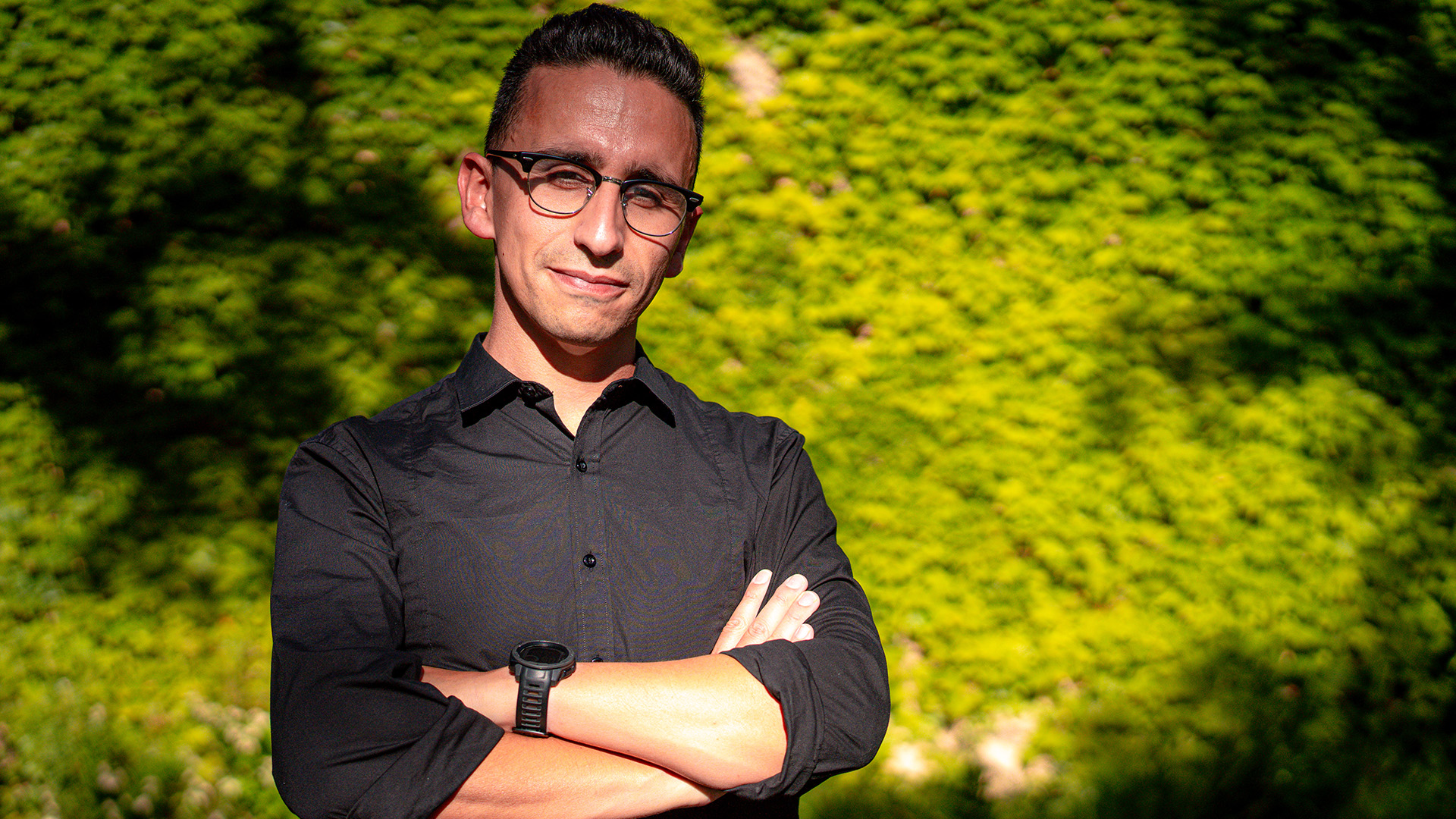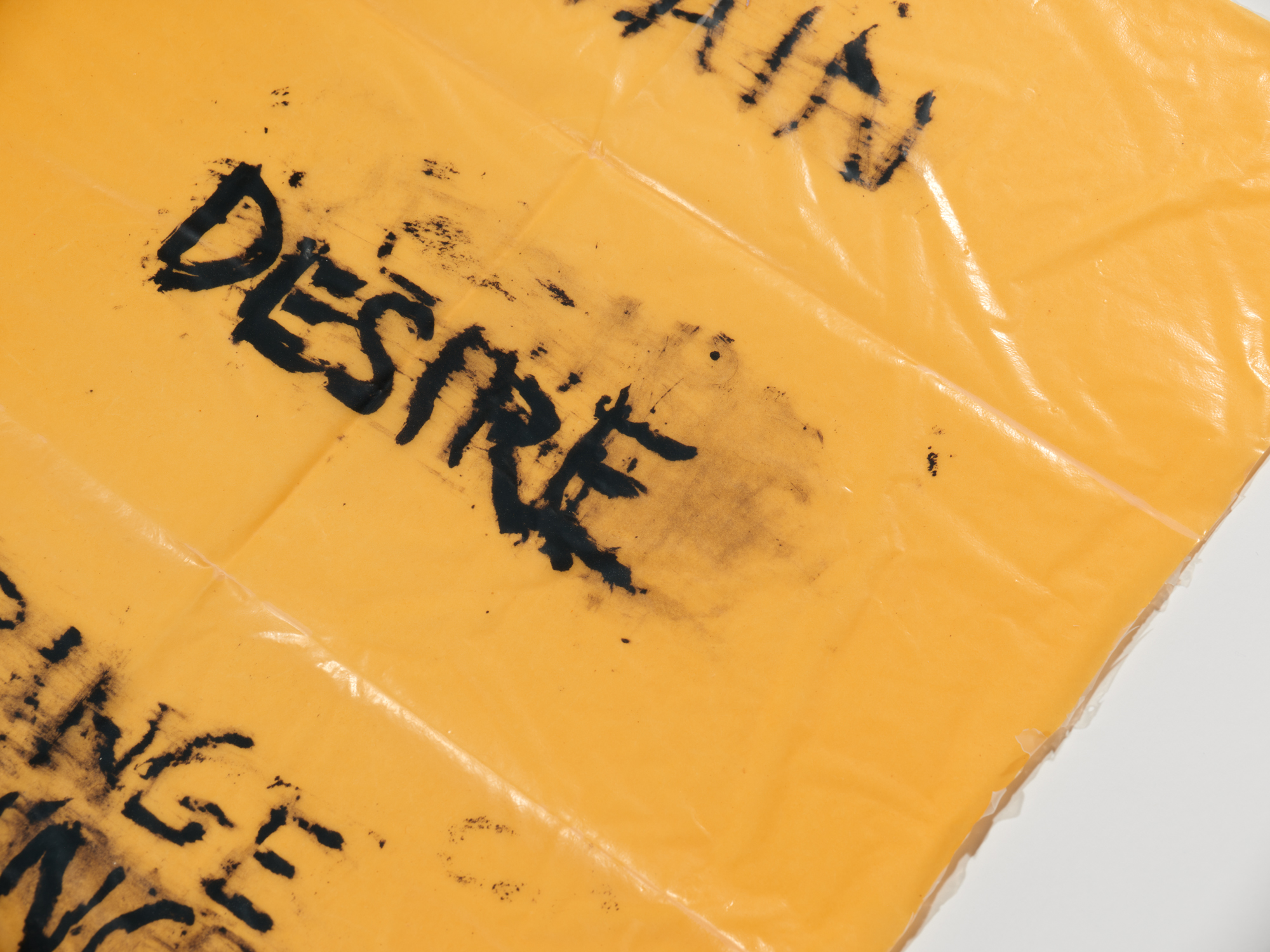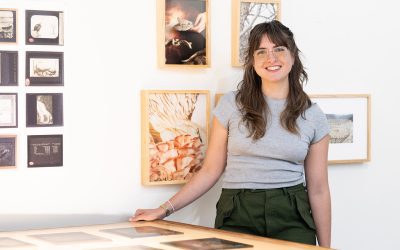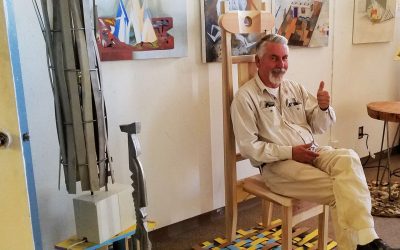
Fulbright Scholar in Residence comes to UNM from Sardinia
Sardinian ethnomusicologist Diego Pani will be a Fulbright Scholar in Residence for the next ten months at The University of New Mexico. He and his wife will be hosted by UNM Associate Professor of Ethnomusicology and Anthropology (Ethnology) Kristina Jacobsen, who has spent time engaged in ethnographic fieldwork on the Mediterranean island.
A native of Santu Lussurgiu, Sardinia, and a lover of American roots and blues, Pani is a filmmaker, singer, and the manager of musical patrimony of the Istituto Superiore Regionale Etnografico, the main anthropology museum on the Italian island of Sardinia. He is currently a Ph.D. candidate in Ethnomusicology at Memorial University of Newfoundland, and also manages Talk About Records, a DIY record label specializing in blues, rock and roll and punk music.
As a Fulbright Program recipient, Pani will be in New Mexico until May 2025 alongside his wife, graphic designer and musician Elena Cabitza, and will teach a unique class in Sardinian multipart singing that will be open to the public on Tuesday nights. He will also teach two additional courses in his areas of research expertise, Audiovisual Frames: Experiencing Music Through Video Making, and D.I.Y.: The ethos, aesthetics, and modes of production of Do it Yourself in music. Both courses will feature multiple guest speakers, field trips, and hands-on activities, in addition to weekly readings, film viewings, and a final creative project.
For Pani’s research project, during his ten-month stay in New Mexico, he hopes to begin preliminary work on an ethnographic documentary film on the music of Genízaro communities in northern New Mexico.
Jacobsen met Pani eight years ago when he helped to organize a solo songwriting tour she did in Sardinia. Since then, they have worked together on many fronts, both scholarly and musically. In 2018, Pani came to UNM to give a research talk.
For Audiovisual Frames: Experiencing Music Through Video Making, upper-level undergraduates and master’s degree students will explore the intersection of music, culture, and audiovisual media. The course blends theory and hands-on practice, teaching students how to analyze and create audiovisual content that reflects the cultural significance of music. Students will work on projects that capture Albuquerque’s diverse music scene, creating short documentaries, video essays, or multimedia installations.
In the course on Sardinian multipart singing, UNM students and community members will study traditional music deeply connected to Pani’s research interests and upbringing in Sardinia.
“Multipart singing is one of Sardinia’s most vibrant folk music traditions, typically performed by four singers,” he explained. “Each area and village on the island have unique styles, techniques, and song traditions. One of the most iconic styles is called cuncordu, a term that means ‘harmony’ musically and socially, referring to both the song and the group of singers.” Students will learn and perform two songs from two main variants of Sardinian multipart singing, working in groups of four singers.
D.I.Y.: The Ethos, aesthetics, and Modes of Production of Do It Yourself in Music looks at how the DIY spirit from punk rock has shaped modern music production. Students will examine how this DIY ethos plays out in their community through real examples and guest speakers like musicians and producers who live and breathe DIY. The course also covers the visual side of DIY culture, such as album art, zines, and concert posters, highlighting the connection between music and visual expression.
“I’m excited to dive into Albuquerque’s rich and diverse culture and fully immerse myself in the New Mexico experience. While at UNM as a Fulbright Scholar in Residence, I’m looking forward to deepening my expertise in ethnomusicology and sound studies, primarily through the lens of documentary film. I aim to collaborate with UNM’s vibrant academic community, shaping my teaching and research while working on a new documentary project focused on the New Mexico community and its connection to sound,” Pani said.
MORE INFORMATION
UNM students are invited to join a performance-based, one-credit course on Sardinian Traditional Multipart Singing beginning on Tuesday, August 27, 2024 in The Center for the Arts building in Room 1108 from 5:30-8:00PM. The class is open to all singers and instrumentalists (singing experience is encouraged but not required). Students can sign up via Canvas and receive one credit for this course. Register today as there are only a few spots left in the course.
Community Members can participate by purchasing their spot via this link: https://secure.touchnet.com/C21597_ustores/web/product_detail.jsp?PRODUCTID=3199&SINGLESTORE=true
For specific questions, please contact Diego Pani at dpani@unm.edu or Professor Kristina Jacobsen at kmj23@unm.edu
MFA Alum Emma Ressel Awarded Postdoctoral Fellowship at Center for Regional Studies
Emma Ressel is an artist working with large format film photography, re-photography, and archives. Her current work researches natural history collections to examine how we describe nature to ourselves over vast timescales. Ressel earned her BA in Photography at Bard...
Celebrating the Retirement of Artist and Educator Randall Wilson
His practice merges the historical methods of carving green wood with embossed patterning inspired by traditional leather and tinwork of the Southwest. Randall’s sculptures are shaped not only by his hand, but also by time. Each piece is left to respond naturally to...
Confidence in Abstraction: Brandon Zech’s review of Raychael Stine’s “Falls and Springs and Stardust Things”
Brandon Zech of Glasstire: Texas Visual Art recently reviewed Professor of Painting and Drawing Raychael Stine’s exhibition, “Falls and Springs and Stardust Things,” in his piece “Chimerical Colors.” Zech writes, “Raychel Stine’s paintings are full of pleasurable...




